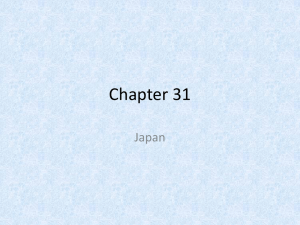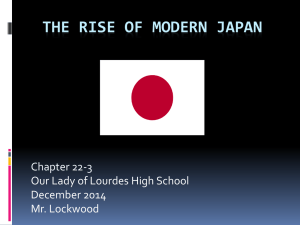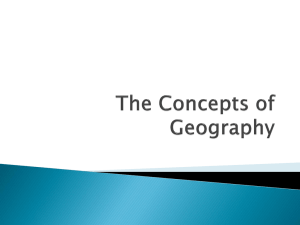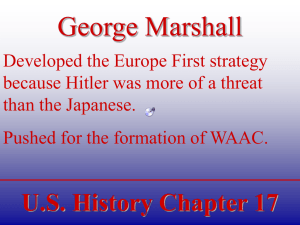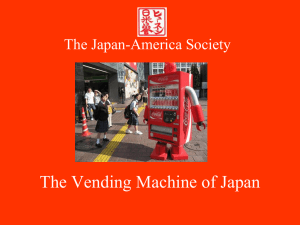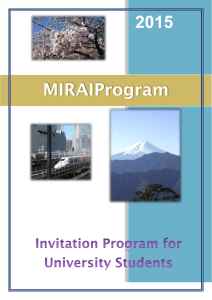- The Archi Blog
advertisement
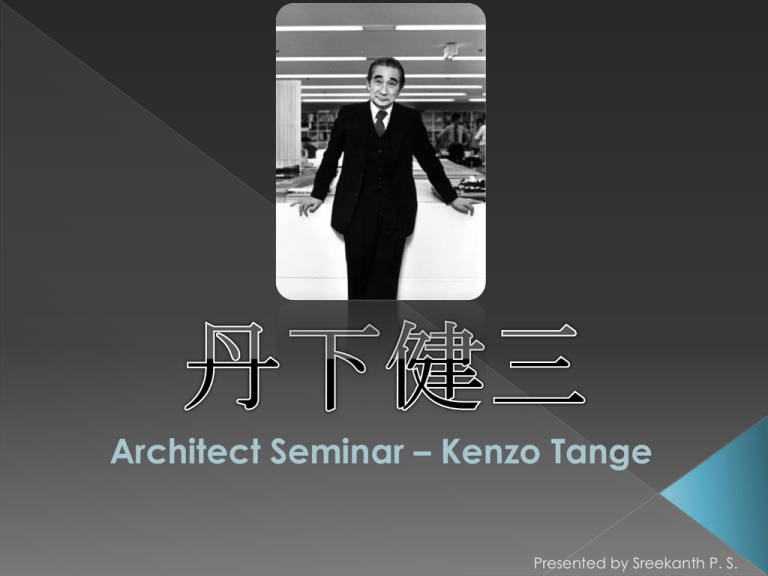
Architect Seminar – Kenzo Tange Presented by Sreekanth P. S. Nationality Japanese Born 4 September 1913 Osaka, Japan Died 22 March 2005 Tokyo, Japan Alma mater The University of Tokyo Practice 1946 Tange Laboratory 1961 The Urbanists and Architects Team Kenzo Tange Associates Awards Plitzker Prize, RIBA Gold Medal, AIA Gold Medal, Order of Culture, Order of Sacred Treasures An influential protagonist of the Structuralist movement. • He believed in combining traditional Japanese styles with modernism. • Influenced from an early age by the Swiss modernist, Le Corbusier • Winner of the 1987 Pritzker Prize for architecture • Yoyogi National Gymnasium(1964) • • • • Formed in the late 1950s by a small group of young Japanese architects and designers Human society modelled in biological terms Based on Buddhist notions of impermanence and change. Relied heavily on advanced technology, and they often consist of adaptable plug-in megastructures Mega city planning for Tokyo (Kenzo Tange 1960) The most famous built example of Metabolism is Kurokawa's Nakagin Capsule Tower (1972). Yoyogi National Gymnasium St. Mary's Cathedral Hiroshima Peace Monument Fuji TV headquarters Tokyo Metropolitan Government Building(1991) Computer Chip Gothic Cathedral Traditional Japanese houses. The exterior surfaces covered with geometric pattern executed in granite Earthquake resistant structure Observation desk at the top At the top of each tower are satellite dishes pointing in all directions. The smaller building housing government offices is located to the south of the main building. The two structures are joined by the multi-story portico . The style of the south building is less vertical and takes on the form of a cluster of buildings. Acts as an unifying element The portico wraps gently around the plaza, joining it to the main building as well as the assembly hall. Sculptures The fan-shaped plaza, modeled on the famous Campo in Siena, Acts as a separation Slopes gently up as one moves away from the main structure. An oasis of rare harmony and tranquillity Campo in Siena The assembly hall is a circular metal-clad structure which looms over the plaza from above the portico. A round window placed at its center First Floor Plan of super block Second Floor Plan of super block Section of Super Block Fusion of eastern and western elements One based on structural principle other on futuristic principle Shift to Monumental Structures from his minimalist ideologies Kenzo Tange's attempt to embrace the postmodernist movement of the eighties. Deviation from his general idea of Traditional Japanese Architecture The perfect architectural incarnation of modern Japan
